| Product Name | Tau dGAE (297-391) AD-mimic Pre-formed Fibrils | |||||||||||||||||||||||||||||||||||||||||||||||||||||||||||||||||||||||||||||||||||||||||||||||||||||||||||||||||||||
| Description |
Human Recombinant Tau dGAE (297-391) AD-mimic Pre-formed Fibrils (fibrilized without heparin) |
|||||||||||||||||||||||||||||||||||||||||||||||||||||||||||||||||||||||||||||||||||||||||||||||||||||||||||||||||||||
| Applications | WB, SDS PAGE, In vitro Assay | |||||||||||||||||||||||||||||||||||||||||||||||||||||||||||||||||||||||||||||||||||||||||||||||||||||||||||||||||||||
| Concentration | 2 mg/ml or 5 mg/ml | |||||||||||||||||||||||||||||||||||||||||||||||||||||||||||||||||||||||||||||||||||||||||||||||||||||||||||||||||||||
| Conjugates |
No tag
StreptavidinProperties:
Biotin
|
|||||||||||||||||||||||||||||||||||||||||||||||||||||||||||||||||||||||||||||||||||||||||||||||||||||||||||||||||||||
| R-PE (R-Phycoerythrin) | ||
| Overview: |  |
Optical Properties:
λex = 565 nm λem = 575 nm εmax = 2.0×106 Φf = 0.84 Brightness = 1.68 x 103 Laser = 488 to 561 nm Filter set = TRITC |
Properties
| Storage Buffer | 10mM PB pH 7.4, 10mM DTT, 200mM MgCl2 |
| Storage Temperature | -80ºC |
| Shipping Temperature | Dry Ice. Shipping note: Product will be shipped separately from other products purchased in the same order. |
| Purification | Ion-exchange Purified |
| Cite This Product | Human Recombinant Tau dGAE (297-391) AD-mimic Pre-formed Fibrils (StressMarq Biosciences Inc., Victoria BC CANADA, Catalog # SPR-502) |
| Certificate of Analysis | Protein certified >95% pure on SDS-PAGE & Nanodrop analysis. |
| Other Relevant Information | For best results, sonicate immediately prior to use. Refer to the Neurodegenerative Protein Handling Instructions on our website, or the product datasheet for further information. Monomer source is catalog# SPR-501. |
Biological Description
| Alternative Names | Tau aggregate, Tau PFFs, Tau PFF, Tau protein aggregate, Tau protein, microtubule-associated protein Tau, MAPT, MAP, microtubule-associated protein, Truncated Tau Protein Aggregate, Paired Helical Filament-Tau, Phf-Tau, Neurofibrillary Tangle Protein, dGAE Tau Protein, Tau dGAE |
| Research Areas | Alzheimer's Disease, Axon Markers, Cell Markers, Cell Signaling, Cytoskeleton, Microtubules, MT Associated Proteins, Neurodegeneration, Neuron Markers, Neuroscience, Tangles & Tau |
| Swiss Prot | P10636-8 |
| Scientific Background | Filamentous tau inclusions are a hallmark of many neurodegenerative diseases, including Alzheimer’s disease (AD) and Chronic Traumatic Encephalopathy (CTE), collectively called tauopathies. Advances in Cryo-EM have revealed that tau filaments isolated from individuals with a particular neurodegenerative disease share a distinct tau fold – i.e. an AD-isolated Tau filaments’ fold is distinct from a CTE-isolated Tau filaments’ fold (1-3). Utilizing Tau filaments with the correct disease-specific fold is an important goal towards better mimicking specific human diseases in cellular and in vivo models. Recent Cryo-EM studies have demonstrated that recombinantly generated Tau dGAE monomers will form the disease-isolated AD or CTE Tau filament folds under highly specific conditions in vitro (4, 5). StressMarq’s catalog# SPR-502 Tau dGAE (297-391) AD-mimic PFFs are purified and fibrilized under these exact published conditions that replicate the disease-isolated AD-fold (200 rpm at 37oC in 10 mM PB 10 mM DTT pH 7.4 200 mM MgCl2 for 48 hours). |
| References |
1. Goedert, Eisenberg and Crowther. 2017. Propagation of Tau Aggregates and Neurodegeneration. Annu Rev Neurosci. DOI: https://doi.org/10.1146/annurev-neuro-072116-031153 2. Fitzpatrick et al. 2017. Cryo-EM structures of tau filaments from Alzheimer’s disease. Nature. DOI: 10.1038/nature23002 3. Falcon et al. 2019. Novel tau filament fold in chronic traumatic encephalopathy encloses hydrophobic molecules. Nature. DOI: https://doi.org/10.1038/s41586-019-1026-5. 4. Lovestam et al. 2022. Assembly of Recombinant Tau into Filaments Identical to those of Alzheimer’s disease and Chronic Traumatic Encephalopathy. eLife. DOI: https://doi.org/10.7554/eLife.76494 5. Lovestam et al. 2023. Disease-specific Tau Filaments Assemble via Polymorphic Intermediates. bioRxiv. https://doi.org/10.1101/2023.07.24.550295 |
Product Images
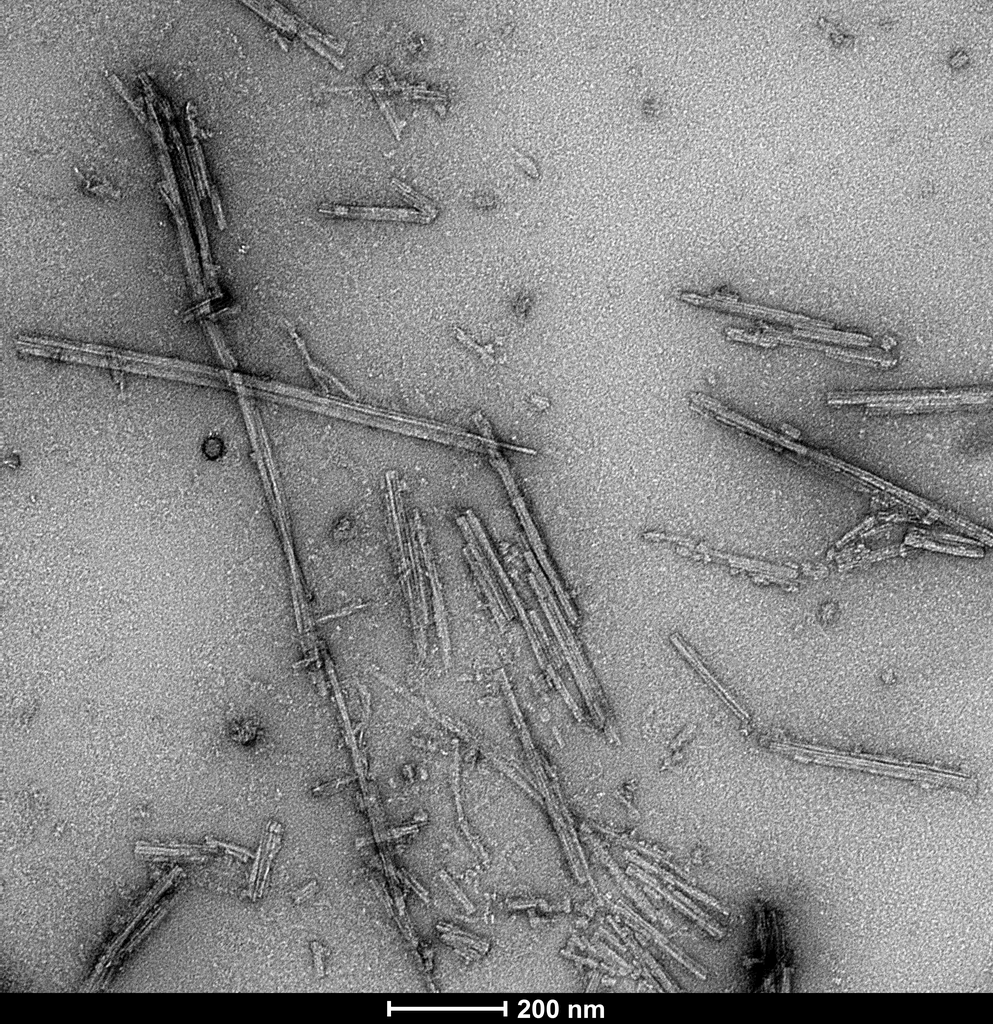
TEM of Tau dGAE AD-mimic fibrils (SPR-502) generated from Tau dGAE monomers (SPR-501) by shaking 200 rpm at 37oC for 48 hours in 10 mM PB 10 mM DTT pH 7.4 with 200 mM MgCl2 added (Lovestam et al. 2022, eLife). Negative stain transmission electron microscopy images acquired at 80 Kv on carbon coated 400 mesh copper grids using phosphotungstic acid and uranyl acetate stain. Scale bar = 200 nm.

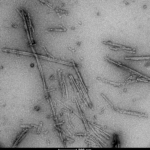
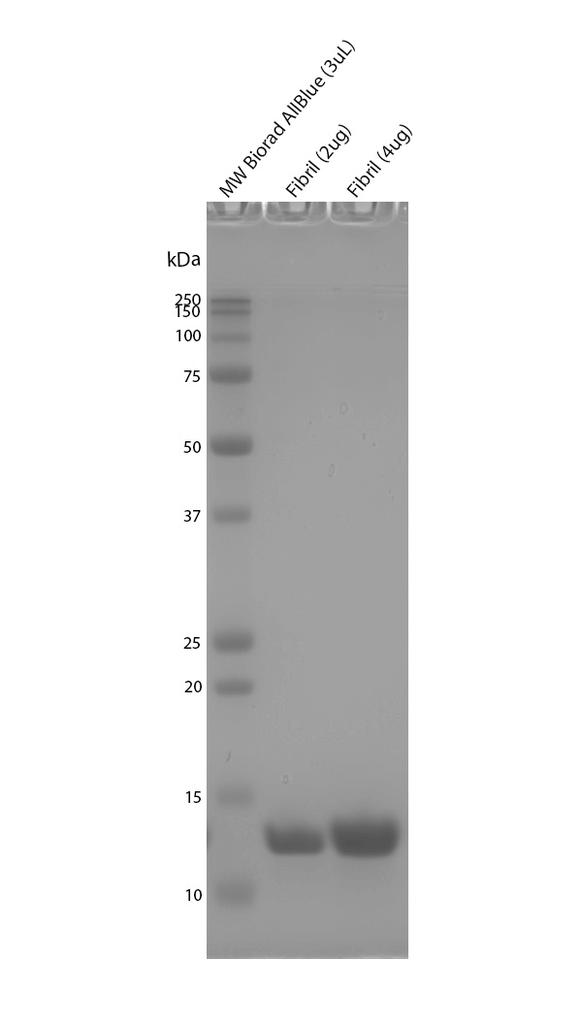
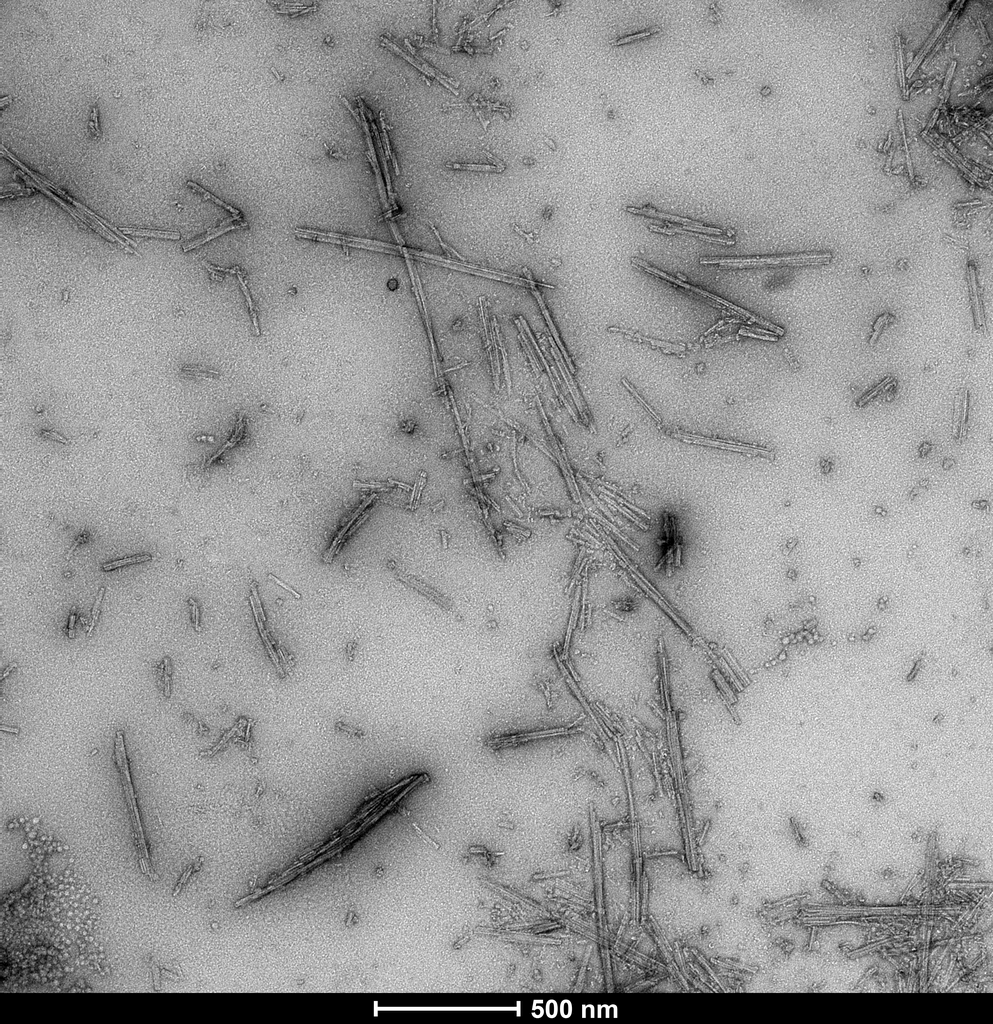
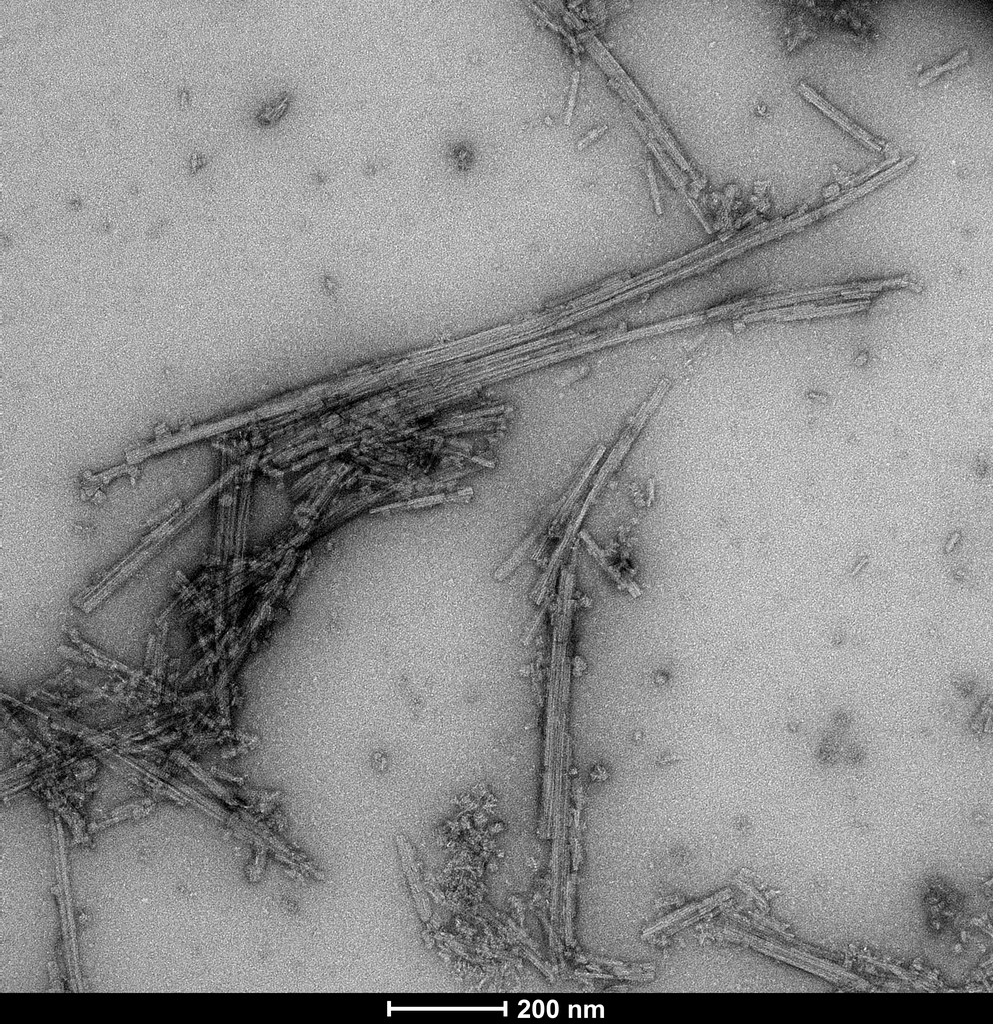



















Reviews
There are no reviews yet.